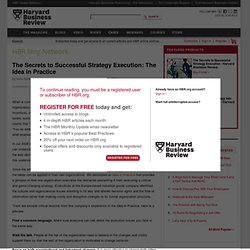

Liberté & Cie. Health & Stress. Communication ~ Transmit ideas. Leadership Programs for Youth. 5 Astuces pour Accrocher votre Lecteur dès les Premières Lignes de votre CV. 'How about an objective so outlandish that I can’t help but set up a phone screen.

I’m not suggesting that you make anything up, I’m asking you to market yourself in a way that I’m going to remember. A resume is not a statement of facts. It’s a declaration of intent. ' Rands Partant de l'équation, qu'un recruteur lit votre CV avant votre lettre de motivation et qu'il faut le convaincre en 10 secondes de poursuivre sa lecture, vous aurez vite compris l'intérêt qu'il y a à rédiger une accroche puissante dès le premier tiers de votre CV.
Voici donc 5 recommandations pour construire une accroche qui retiendra l'attention de votre lecteur et lui donnera envie de lire le reste de votre CV, et de votre candidature. What in that statement will make you stand out from the others? Le reste de votre CV ensuite ne fait que back uper votre accroche. #2 Soyez sélectif. #3 Soyez factuel : en sélectionnant des expériences qui font sens. en sélectionnant et citant des références parmi vos anciens managers.
Commentaires en ligne : Présentation zen : Pour des présentations plus simples, claires et percutantes. Motivation - A story. Efficiency ~ Make things happen. Creativity ~ Propose new things. Happiness & Inspiration. The Secrets to Successful Strategy Execution: The Idea in Practice - Ilona Steffen, Niko Canner, and Gary Neilson.
By Ilona Steffen, Niko Canner, and Gary Neilson | 10:05 AM January 13, 2012 When a company struggles to execute on a strategy, all too often the first reaction is to redraw the organization chart.

This is costly and often ineffective. Rather than tinker with structure and incentives, organizations should look at the inner workings of the company and pull more effective levers, such as decision rights, information flow, and motivators. We are so emphatic with our clients that “it’s not just about structure” that during a recent discussion with one CEO he asked, “You do address structure too, right?” We do, of course, but we believe it is only one component of what enables an organization to execute. In our 2008 article “The Secrets to Successful Strategy Execution” we explained how executives can understand the “DNA” that makes up their organizations: not just the lines on the org chart but the way decisions are made, how information flows, and what motivates people.
Walk the talk. How Will You Measure Your Life? Editor’s Note: When the members of the class of 2010 entered business school, the economy was strong and their post-graduation ambitions could be limitless.

Just a few weeks later, the economy went into a tailspin. They’ve spent the past two years recalibrating their worldview and their definition of success. The students seem highly aware of how the world has changed (as the sampling of views in this article shows). In the spring, Harvard Business School’s graduating class asked HBS professor Clay Christensen to address them—but not on how to apply his principles and thinking to their post-HBS careers. The students wanted to know how to apply them to their personal lives. Before I published The Innovator’s Dilemma, I got a call from Andrew Grove, then the chairman of Intel. I insisted that I needed 10 more minutes to describe how the process of disruption had worked its way through a very different industry, steel, so that he and his team could understand how disruption worked. "No" is the New "Yes": Four Practices to Reprioritize Your Life - Tony Schwartz.